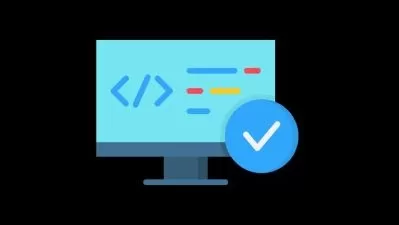Learn FPGA design by practice: Alarm Clock
2:03:27
Description
Design and Build a Functional Alarm Clock Using FPGA and VHDL: From Concept to Hardware Implementation
What You'll Learn?
- Specification Analysis: Understanding system requirements and design specifications for an FPGA-based project.
- Digital Logic Design with VHDL: Designing combinational and sequential logic circuits.
- FPGA Basics: Gaining hands-on experience with FPGA hardware, toolchains, and development workflows.
- Buzzer device: Learning how to interface and drive a buzzer for ring tone generation.
- 7-Segment Display: Learning how to interface and drive an external 7-segment display for time visualization.
- Push Button and Switch Interfacing: Understanding how to connect and debounce input devices like buttons and switches.
- FPGA Synthesis and Simulation: Using simulation tools to verify the design before synthesizing it onto hardware.
- Demonstrating the Final System: Presenting a working alarm clock system running on an FPGA board.
Who is this for?
What You Need to Know?
More details
DescriptionThis course is designed to immerse you in the world of hardware engineering. The course will guide you through the process of converting requirements and needs into practical and efficient designs. You will explore the basic concepts of digital circuits and VHDLÂ coding rules and syntax. Furthermore, the course will cover the use of constraints files, synthesis and simulation of HDL designs, enabling you to verify the correctness of your circuits before physical implementation. By the end of the course, you will have a comprehensive skill set to design, implement, and test digital systems.
To achieve all of the above, we will design in VHDL an Alarm Clock on FPGA. One external 4 digits 7-segments display will be connected to the FPGA via wires to display the time in HH:MM format. This is ideal to learn about FPGA PMODs and IO pins. The design will allow the user thanks to switches to set either the current time or the alarm. In "SET" mode, the configuration of the clock and alarm will be done by pressing push buttons to either increment minutes or hours. When the current time reaches the configured alarm set by user, a buzzer connected to FPGAÂ will buzz for one minute.
By the end of the course, students will have the practical skills and experience required to design, implement, and verify their own fully functional digital alarm clock system on an FPGA, providing a solid foundation for further FPGA and digital design projects.
Who this course is for:
- Beginner Digital Electronics students or anyone interested in learning FPGA design
This course is designed to immerse you in the world of hardware engineering. The course will guide you through the process of converting requirements and needs into practical and efficient designs. You will explore the basic concepts of digital circuits and VHDLÂ coding rules and syntax. Furthermore, the course will cover the use of constraints files, synthesis and simulation of HDL designs, enabling you to verify the correctness of your circuits before physical implementation. By the end of the course, you will have a comprehensive skill set to design, implement, and test digital systems.
To achieve all of the above, we will design in VHDL an Alarm Clock on FPGA. One external 4 digits 7-segments display will be connected to the FPGA via wires to display the time in HH:MM format. This is ideal to learn about FPGA PMODs and IO pins. The design will allow the user thanks to switches to set either the current time or the alarm. In "SET" mode, the configuration of the clock and alarm will be done by pressing push buttons to either increment minutes or hours. When the current time reaches the configured alarm set by user, a buzzer connected to FPGAÂ will buzz for one minute.
By the end of the course, students will have the practical skills and experience required to design, implement, and verify their own fully functional digital alarm clock system on an FPGA, providing a solid foundation for further FPGA and digital design projects.
Who this course is for:
- Beginner Digital Electronics students or anyone interested in learning FPGA design
User Reviews
Rating

Udemy
View courses Udemy- language english
- Training sessions 19
- duration 2:03:27
- Release Date 2025/02/25










